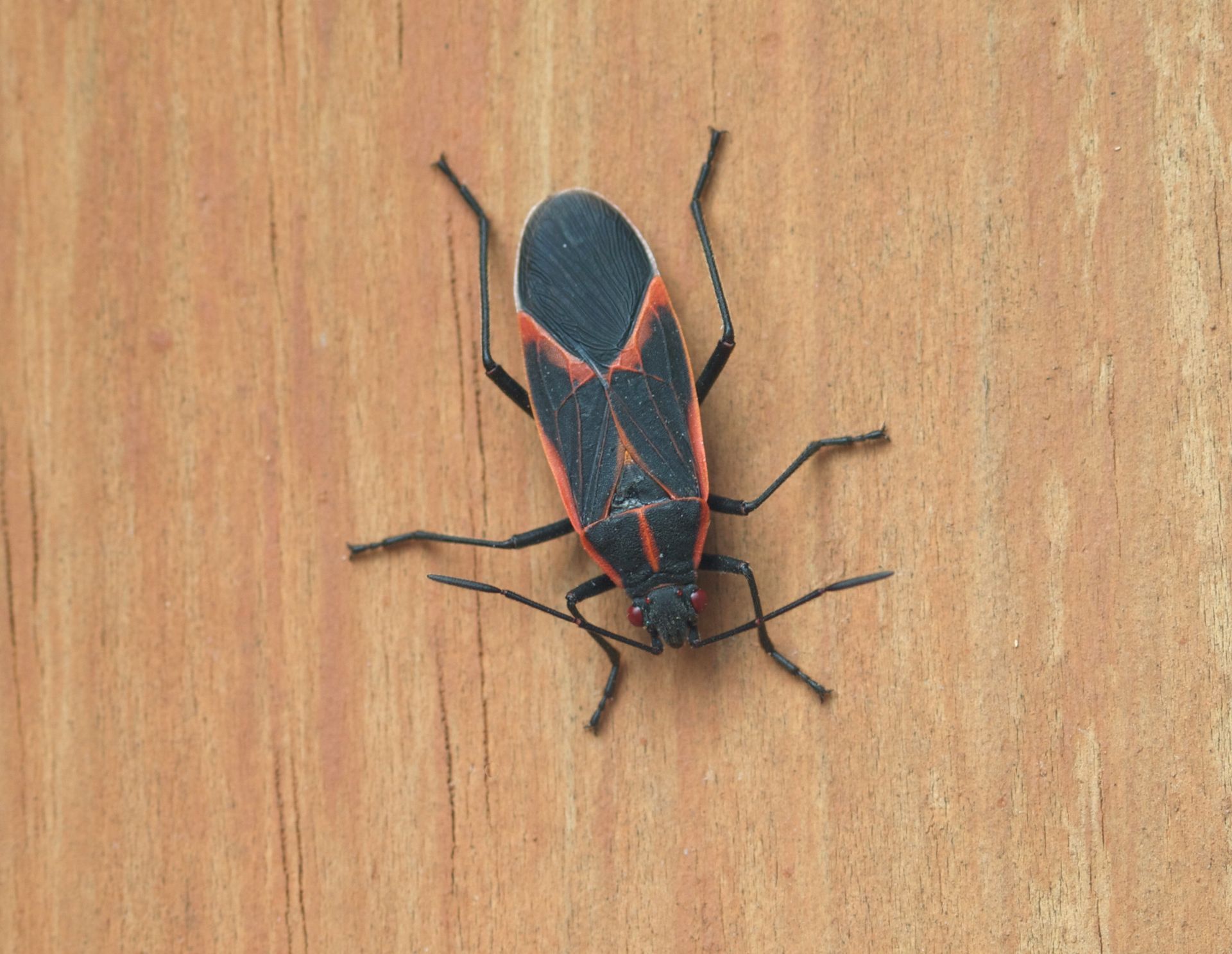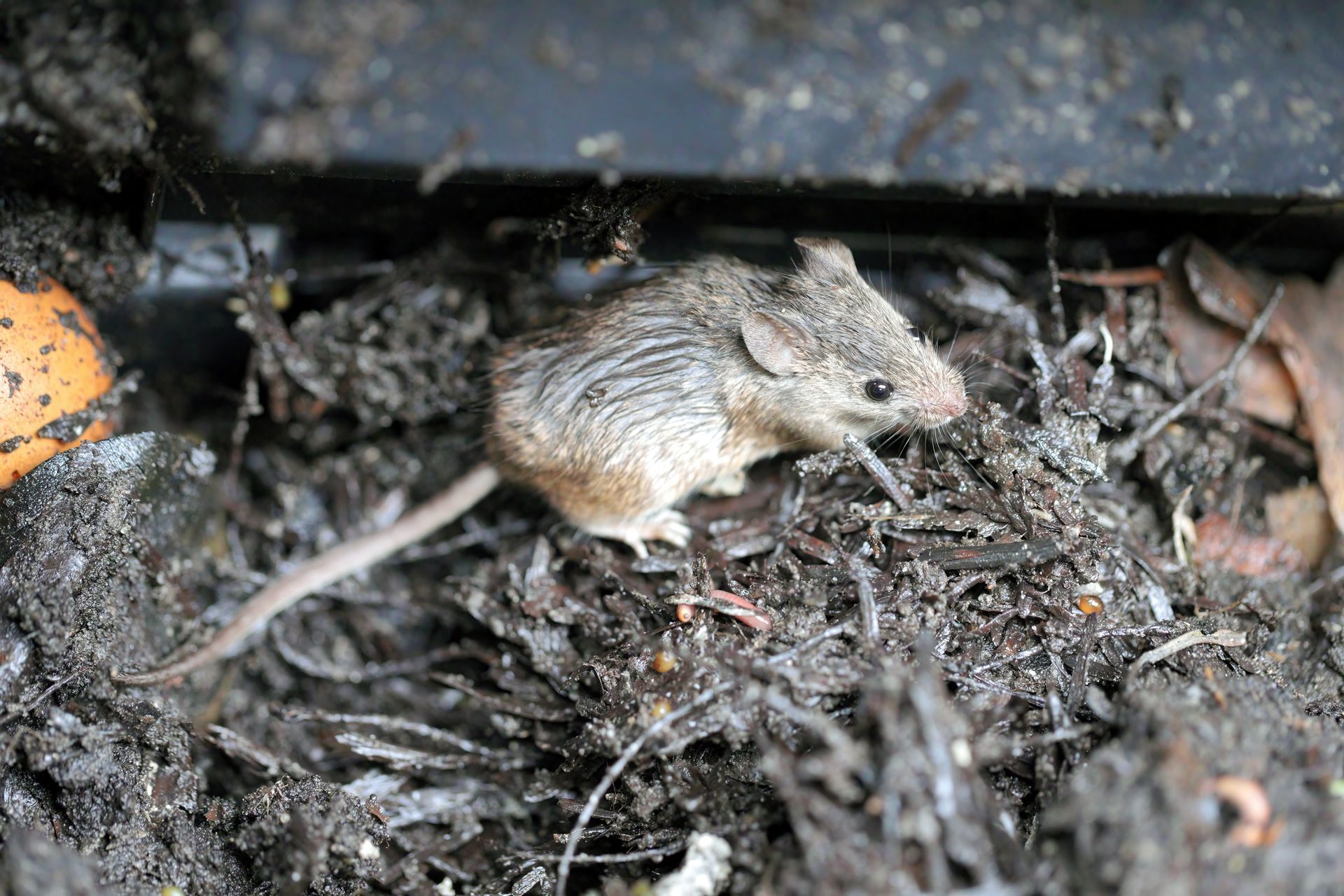Do Boxelder Bugs Bite Humans?

Boxelder bugs are primarily considered nuisance pests rather than harmful ones. Despite their ability to bite, they rarely do so. These black and orange insects are commonly found on and around boxelder trees and can be found throughout the United States where these trees are present. They often enter homes, sheds, and garages to overwinter. While their mouthparts are capable of piercing human skin, boxelder bugs generally do not bite humans and are more focused on feeding on the seeds and foliage of boxelder trees.
What are Boxelder Bugs?
Boxelder bugs are scientifically known as Boisea trivittata. They are almond-shaped insects that are characterized by their black bodies with reddish-orange markings along their wings and thorax. They typically range from ⅜ to ⅝ inches in length and are commonly found on boxelder and maple trees during the summer, where they feed on leaves, flowers, and seeds. While they primarily reside outdoors, boxelder bugs seek indoor shelter during the autumn to overwinter which makes them a nuisance for homeowners.
Are Boxelder Bugs Harmful?
Boxelder bugs are primarily considered nuisance pests and are not harmful to humans or pets. They possess mouthparts that are primarily capable of piercing plant tissues, and they rarely bite humans because they are not equipped to cause significant harm. These bugs do not carry diseases, but they can be bothersome indoor pests as their fecal material can stain fabrics and their bodies can emit a foul odor when crushed. It is generally recommended to contact a professional exterminator to handle infestations rather than attempting to deal with them personally.
Do Boxelder Bugs Bite?
Boxelder bugs are not known for biting humans, but their piercing-sucking mouthparts can occasionally puncture the skin and cause mild irritation. Symptoms of a boxelder bug bite may include:
- Redness and Swelling: Localized redness and swelling at the bite site
- Itching: Mild itchiness at the affected area
- Minimal Pain: Slight, fleeting discomfort at the bite site
- Skin Rash: A small, red rash localized around the bite area
- Duration: Symptoms typically resolve quickly and within a few hours without needing medical attention
What Should You Do if You’re Bitten by a Boxelder Bug?
If you experience a bite from a boxelder bug, there's generally no cause for alarm as these incidents are typically benign. However, taking proper care of the affected area can help minimize discomfort and prevent potential complications. Here are some recommended steps to follow after a boxelder bug bite:
- Cleanse the Site: Use lukewarm water and a mild, unscented soap to gently clean the bite area. This helps remove any residual saliva or potential irritants from the bug, reducing the risk of infection.
- Soothe with Cold: To alleviate any swelling or itching, apply a cool compress to the bite site. You can use a clean cloth dampened with cool water or a properly wrapped ice pack. Limit application to 10-15 minute intervals to protect your skin.
- Topical Relief Options: For persistent itching, consider applying a non-prescription anti-itch cream or lotion. Options like hydrocortisone or calamine can provide relief. Always follow the product's usage guidelines carefully.
- Systemic Itch Management: If discomfort is significant, an over-the-counter oral antihistamine may help alleviate symptoms. Consult with a pharmacist about appropriate options and dosages for your situation.
- Resist Scratching: While tempting, scratching the bite site can lead to skin damage and increase the risk of infection. Try patting or applying gentle pressure instead if you feel the urge to scratch.
- Maintain Hygiene: Ensure the affected area remains clean and dry as it heals. Avoid scratching to prevent introducing bacteria that could lead to infection. Avoid the use of any harsh chemicals on the bitten skin as this can result in irritation.
- Monitor for Signs of Infection: While rare, some individuals may experience more pronounced reactions. If you notice unusual swelling, persistent pain, or signs of infection, it's advisable to seek medical attention for proper evaluation and treatment.
- When to Consult a Doctor: Although extremely uncommon, some individuals may experience more severe reactions to boxelder bug bites. If you develop symptoms like difficulty breathing, facial swelling, or an extensive rash, seek immediate medical care as these could indicate a serious allergic response.
Boxelder bug bites are not a major health concern and most people do not require medical treatment for them, but you should seek medical attention for any severe symptoms that you experience.
Can Boxelder Bugs Still Pose a Danger to Humans Without Biting Them
Even without biting, boxelder bugs can occasionally pose a minor danger to humans. Some individuals have reported mild irritation or discomfort after contact with these insects which is likely due to a mild allergic reaction to the chemicals they produce. These reactions typically manifest as minor skin irritation or redness, but they are not considered dangerous in a majority of cases.
Are Boxelder Bugs a Threat to Pets?
Boxelder bugs are generally harmless to household pets because they lack venom and stingers that could pose a threat. However, if a pet happens to eat a boxelder bug, the insect's unpleasant taste can cause the pet to vomit. While this reaction is generally not serious, it can be distressing for both the pet and the owner. Overall, boxelder bugs are harmless to pets, but their nasty taste discourages repeated encounters.
Are Boxelder Bugs a Threat to Property?
Boxelder bugs are generally not a significant threat to property, but they can cause some minor issues. As temperatures drop, these bugs seek refuge indoors and often congregate in large numbers in basements, between walls, and on the sunny sides of houses. While inside, their fecal matter can stain light colored surfaces, drapes, upholstery, and clothing. They can also create nuisance in other ways, particularly when disturbed or crushed, as they emit an unpleasant odor like stink bugs. Outside, they rarely cause substantial damage to vegetation and ornamental plants, though they may occasionally cause minor cosmetic damage to fruit they feed on.
Will Boxelder Bugs Find Their Way Inside?
During the winter months, boxelder bugs often find their way inside homes in search of warmth. Boxelder bugs tend to group together on surfaces that are exposed to the sun to warm themselves. When it starts to get cold in the fall, these large groups will seek out shelter to stay warm. This often leads them inside where temperatures are comfortable for habitation. They manage to find entry through windows, doors, and gaps in ceiling lights, soffits, vents, and siding. While they do not reproduce indoors, their presence can be annoying as they may spot curtains, furnishings, and clothing with their excrement.
How to Prevent Boxelder Bugs
To safeguard your home against boxelder bug invasions, there are various preventative strategies you can employ. These proactive measures can help maintain a bug free living environment. First, remove all debris from around the house like mulch under shrubs, rocks, woodpiles, and leaves to eliminate their hiding places. Close off any potential entrances by repairing holes in window and door screens, sealing any cracks and crevices with silicone or silicon-latex caulk, and installing door sweeps on all exterior entrances.
How to Get Rid of Boxelder Bugs
To get rid of boxelder bugs, start by vacuuming them up to remove any visible bugs from your home without crushing them because crushing them can leave a stain and release an unpleasant odor. For outdoor control, remove boxelder trees or consider using insecticide sprays on trees and exterior walls where bugs congregate. If the infestation is severe or persistent, it may be best to contact a professional pest control service to ensure effective and safe removal.
Contact EcoGuard Pest Management if You Are Dealing with Boxelder Bugs
If you're dealing with a boxelder bug infestation and finding it challenging to manage on your own, EcoGuard Pest Management is here to help. Our experienced professionals use safe and effective methods to eliminate these nuisance pests from your home and prevent future invasions. Don't let boxelder bugs disrupt your peace and comfort. Contact EcoGuard Pest Management today for a thorough and reliable solution.
Boxelder Bug FAQs
What happens when a boxelder bug bites you?
While uncommon, boxelder bug bites on humans may occur. When they do, the typical reaction is mild, often manifesting as a slight skin irritation, redness, and a small, raised bump reminiscent of a mosquito bite. These incidents rarely pose serious health concerns. Nevertheless, if you notice any unexpected or severe reactions following a suspected bite, it's prudent to consult with a healthcare professional for proper assessment and guidance.
Do boxelder bugs make you itch?
Boxelder bugs themselves don't typically cause itching but if they bite, it may lead to mild irritation. Most people won't experience significant discomfort, but any itchiness would be similar to that from a minor insect bite.
Are boxelder bugs dangerous to humans?
Boxelder bugs are generally not harmful to humans as they don’t bite or sting and don’t carry diseases. While they can be a nuisance and may cause minor irritation or staining, they pose no serious health threat.
Can you touch boxelder bugs?
You can touch boxelder bugs, but it's best to avoid direct contact. While they are not harmful, handling them may cause minor irritation or leave residue on your hands.

















